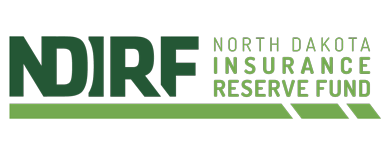NDIRF’s Successful Property Coverage Management Attracts Attention of National Legislative Organization
Many schools across the nation are grappling with staggering property insurance cost increases, a trend that has also applied pressure to homeowners and business owners.
According to a June 27, 2023, article from Education Week, a national “K-12 education news and information” (accessed Oct. 25, 2023, from EducationWeek.org) organization, the rising property insurance costs affecting schools are due to severe weather events happening across the country.
In July 2023, the Arkansas state legislature approved $10.8 million “in one-time state funds to help school districts pay for their rising property insurance costs” (Wickline, M. 19 July, 2023. Legislative committee endorses $11M in state funds to help school districts with property insurance costs, accessed Oct. 25, 2023, from ArkansasOnline.com). The approved amount covers only 30% of the insurance cost increase.
So, how is North Dakota and the North Dakota Insurance Reserve Fund (NDIRF) involved in this conversation?
NDIRF CEO Brennan Quintus recently shared insight about the NDIRF’s successful administration of the North Dakota Fire and Tornado Fund (NDFT) with the National Conference of State Legislatures (NCSL). The NCSL organization was created in 1975 by state legislators and their staffs to provide bipartisan policy research, training resources, and technical assistance across all 50 states, commonwealths, territories, and the District of Columbia. Every state legislator and staffer is a member of the organization (accessed Oct. 25, 2023, from NCSL.org).
The NDIRF, which has administered the NDFT since 2019, a North Dakota state fund that offers building, outdoor, trailer, and personal property coverage to state and local government entities, has assessed only moderate rate increases over the past four years. The organization’s achievement demonstrates its commitment to effective and efficient operations and overall fund management.
The NCSL sought insight from the NDIRF before it was recently due to provide information to an Oklahoma State Legislature committee meeting on school insurance. The NSCL was tasked with providing the committee examples of states and organizations that have successfully worked to reduce the impact of rising school property coverage costs.
“From the moment we began administering the NDFT, we established a clear plan for success, communicating our goals with all stakeholders, including the state of North Dakota and the fund’s members,” Quintus said. “We tapped into our organization’s experience as a successful local government risk pool and quickly identified collecting updated property valuations as a way to bolster the strength and stability of the NDFT.”
“This information has helped to improve our conversations with reinsurers because it demonstrates responsible fund management and adequate premium collection,” said Quintus, explaining the necessary role reinsurers fulfill for coverage providers.
In its most recent reinsurance contract negotiations, the NDIRF transitioned the NDFT to a shared and layered reinsurance program, spreading the risk among national and international carriers. Given the NDFT’s strong operations and stable loss activity, Quintus shared that many reinsurers were interested in participating in the program.
“Our program was over-subscribed, which means there were more reinsurers interested in participating than we had room for,” he said. “The reaction from reinsurers showed us that we were right to focus on valuations and collecting updated information and, therefore, adequate premiums from NDFT members.”
“So much of it comes down to maintaining a well-managed fund and having the data to support that story,” Quintus continued. “We shared our story with reinsurers, which helped us obtain one of the best possible reinsurance options for the fund, but this story also helps to maintain confidence among our members, reminding them the fund is a strong and stable source of coverage.”
Quintus shared that NDIRF-assessed NDFT member rate increases have been largely due to increasing property valuation amounts and rising reinsurance costs.
The Reinsurance Riddle
Even with responsible management, NDFT reinsurance expenses have increased by over $4 million – though coverage has been reduced – since the NDIRF began administering the fund.
“For one, climate change is causing more frequent natural disasters that affect school district operations and require insurance companies to pay out. And it’s not only districts in hard-hit areas that see higher premiums as a result” (Lieberman, M. 27 June 2023. Schools’ Insurance Costs Are Soaring – And Climate Change Isn’t the Only Reason, accessed Oct. 25, 2023, from EducationWeek.org).
“’The more hurricanes we have in Florida, we’re impacted. The more flooding in the Midwest, we’re impacted,” said Kelli Hanson, executive director of the Schools Insurance Group, which provides insurance to schools in California” (Lieberman, 2023).
Though North Dakota is fairly insulated from catastrophic severe weather events, reinsurers evaluate the market as a whole, meaning weather events that happen anywhere can affect the cost and availability of reinsurance everywhere.
U.S. News and World Report provides a clear explanation of the provider and reinsurer’s relationship on its UWNews.com website (accessed Oct. 25, 2023):
Reinsurance involves one insurance company getting insurance from another insurance company to help cover its financial risks and obligations. There are typically two parties in a reinsurance contract:
- The ceding company or cedent is the company that is transferring its risk.
- The reinsurer is the company used to mitigate the ceding company’s risk.
In exchange for coverage, the ceding company gives the reinsurer some of the insurance premiums it collects from its policyholders.
With regard to rising reinsurance costs, much of it is out of a coverage provider’s control. But Quintus and his team at the NDIRF like to remain focused on what they can control, which is strong operations and data collection.
“We have a great story to tell reinsurers,” Quintus said. “We can show the NDIRF has been ahead of the curve with regard to increased property values and, all the while, we can offer reinsurers a chance to diversify their books of business away from those areas of the country more prone to severe weather-related property losses,” he continued. “Our management has positioned the NDFT and its members for much better results as compared to the challenges other governmental property insurance programs have faced, and are facing, throughout the United States.”






